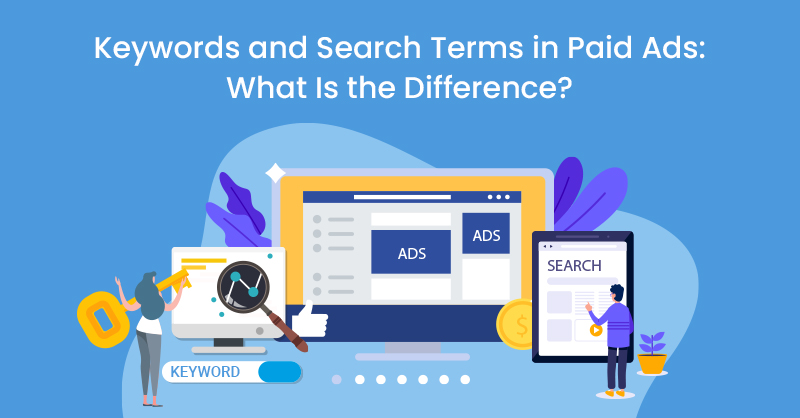When it comes to search engines, no one could disagree that Google is the king of search.
Successfully optimizing your website and content to rank on Google’s search engine results page (SERP) can have a tremendous effect on your sales and conversions, and Google’s ad manager allows brands to create different search ads to promote their business.
While search ads have undergone many changes over the years, one of the latest and best types is the responsive search ad.
These are a special type of paid search ad that allows your ad to automatically adjust its size, appearance, and even messaging to best fit the available space and user query on the Google SERP.
Responsive search ads can greatly improve your click-through rate and drive more conversions to your campaign.
According to Google, advertisers that switched from ETAs (expanded text ads) to RSAs (responsive search ads) while still using the same assets and paying the same exact cost per conversion saw a 7% increase in total conversions.
Starting June 30, 2022, responsive search ads became the default ad format available on Google Ads. If you're not already using responsive search ads, now is the time to start!
For those not sure where to begin, we’ve put together a step-by-step guide to creating responsive Google search ads.
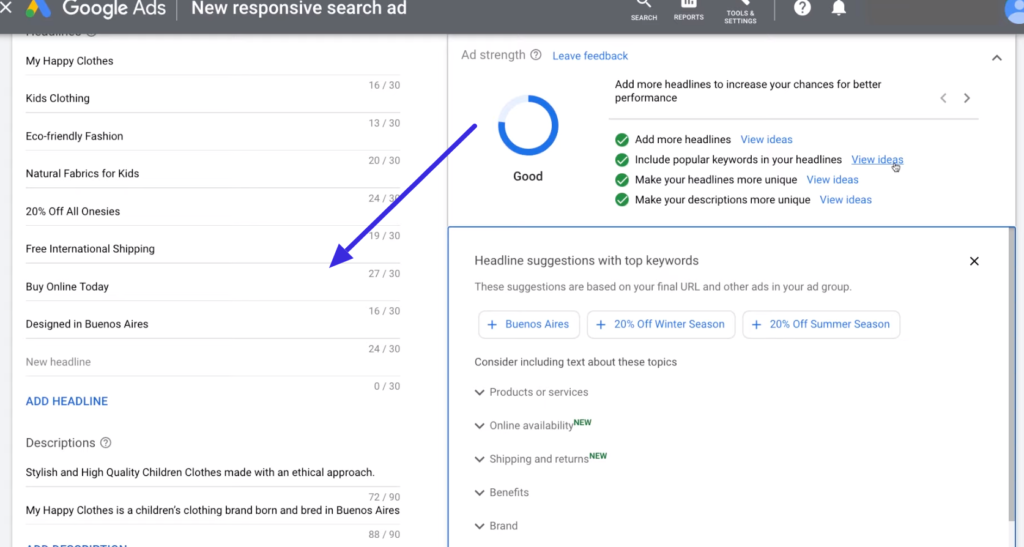
What is the difference between Expanded Text Ads and Responsive Search Ads?
The responsive search ad (RSA) is the new standard format for Google Ads, and it replaces the existing expanded text ad (ETA).
Here are some key differences between the two ad formats:
Expanded Text Ad
- Up to 3 headlines of 30 characters each
- Up to 2 descriptions of 90 characters each
- Full control over copy variations and combinations
Responsive Search Ad
- Up to 15 headlines of 30 characters each
- Up to 4 descriptions of 90 characters each
- Google automatically tests different copy combinations and serves the best performing and most relevant ad
The Future of Responsive Search Ads
As of June 30, 2022, responsive search ads became the only ad format available in Google Ads.
This change is part of Google's ongoing effort to streamline the ad experience and make it easier for advertisers to create and manage their campaigns.
By consolidating to a single ad format, Google also hopes to make it easier for advertisers to create and manage their campaigns and ultimately drive better results.
Pros and Cons of Responsive Search Ads
There are both pros and cons to using responsive search ads. Here are some things to consider:
Pros
- You can create multiple headlines and descriptions, which gives you more opportunities to test different messaging and find what works best for your audience. A single RSA can generate 43,680 variations.
- Google will automatically test different combinations of your headlines and descriptions to find the ones that perform best. This can save you a lot of time and effort!
- Your ad can automatically adjust its size, appearance, and messaging to best fit the available space on the search results page.
Cons
- You have less control over your ad copy, as Google will automatically test different combinations of your headlines and descriptions.
- You might save time with testing, but developing the recommended number of variations can take longer.
- Reporting is currently very limited for responsive search ads, so analyzing and tracking performance can be difficult.
Get Started in 5 Easy Steps
If you're new to responsive search ads, don't worry!
Getting started is easy. Just follow these 5 simple steps:
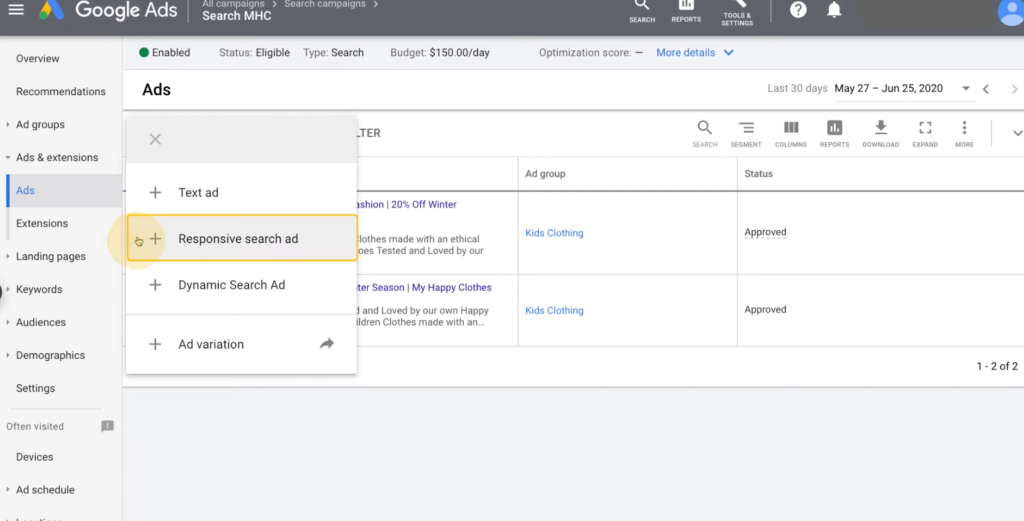
1. Create a new ad group and select responsive search ad as your ad type
First, you'll need to create a new ad group. To do this, go to the "Ads & Extensions" tab and click on the "+" icon.
Next, select responsive search ad as your ad type.
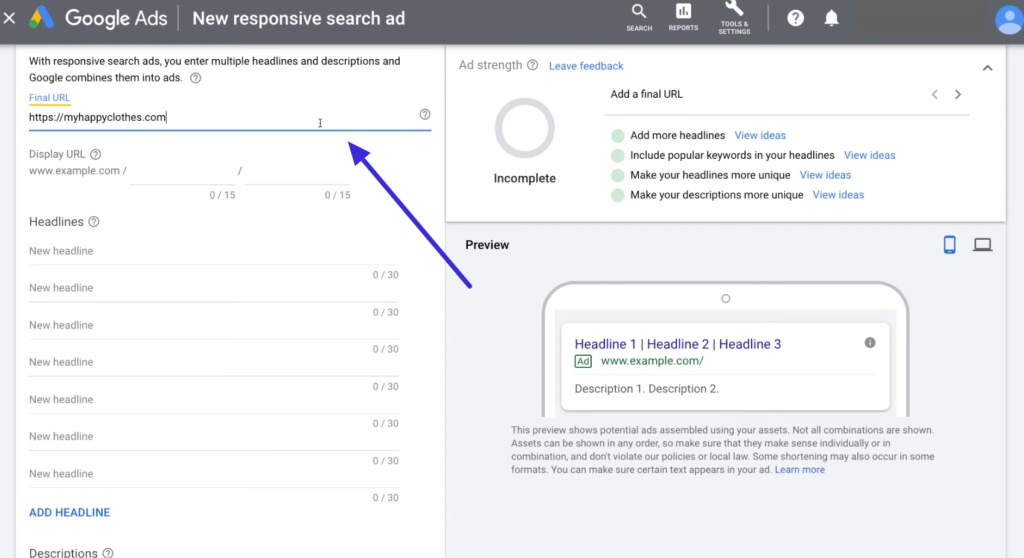
2. Enter your website or landing page URL
In the "Ad Group Settings" section, you'll need to enter your website or landing page URL
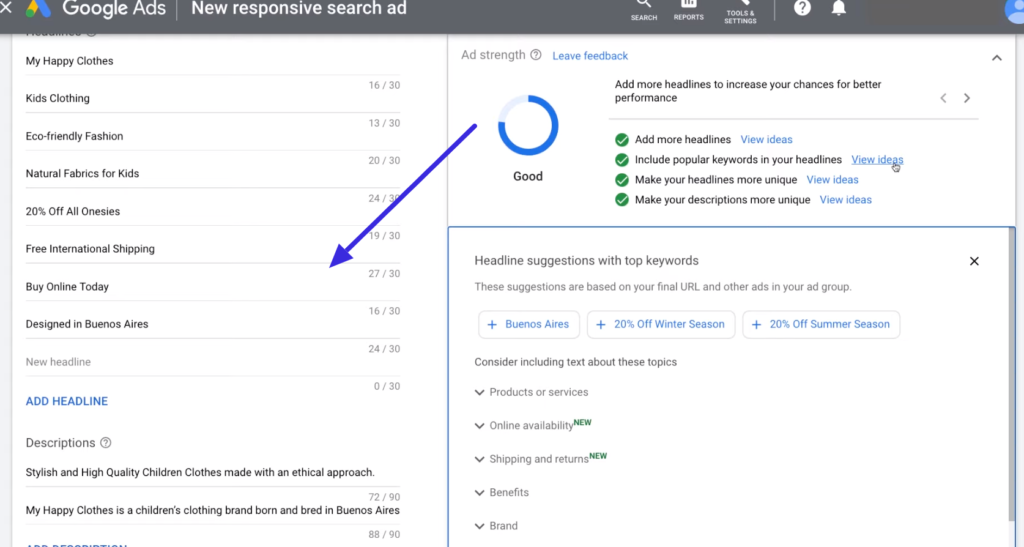
3. Write your headlines and descriptions
To create your responsive search ad, you'll need to write up to 15 headlines and four descriptions.
Keep in mind that your headlines and descriptions should be relevant to each other and to the keywords you're targeting.
Try to include at least one call-to-action in your headlines or descriptions (e.g. "Sell Your House Fast" or "Get a Free Quote").
Responsive search ads with a high number of assets receive more impressions, clicks, and conversions.
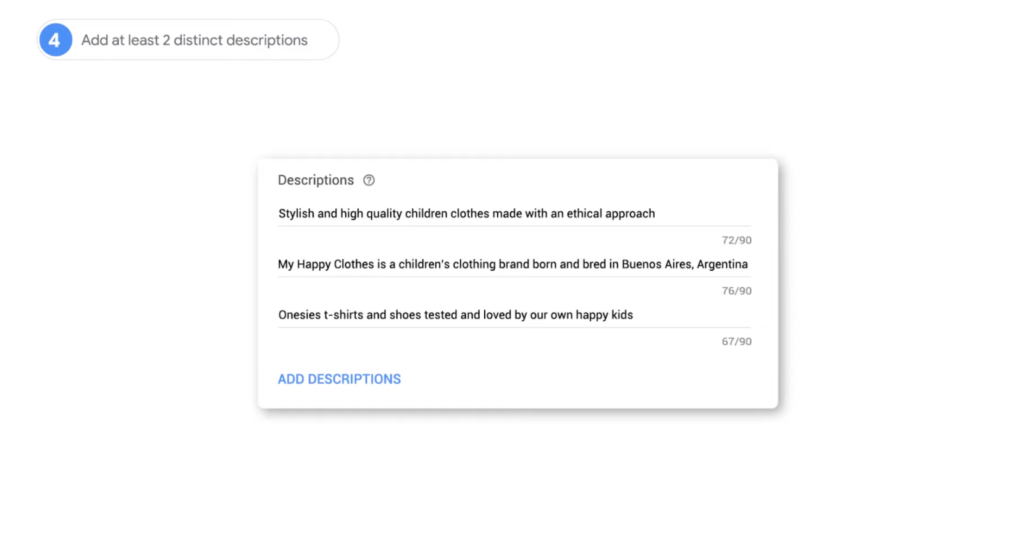
4. Select your ad schedule and budget
You'll also need to select your ad schedule and budget in the Campaign settings.
Stick to a schedule you know you can commit to, and set a realistic budget based on your goals and the average cost-per-click.
5. Review and submit your responsive search ad
Once you've completed all the steps above, it's time to review your responsive search ad and submit it for approval.
To do this, go to the "Preview" tab and make sure everything looks good. If so, click "Save," and if enabled, it will go live once approved.
Tips for Creating a Successful Responsive Search Ad
- Keep your headlines and descriptions relevant to each other and the keywords you're targeting.
- Try to include at least one call to action (CTA) in your headlines or descriptions.
- Make sure your ad copy is clear and concise.
- Use persuasive language to drive conversions.
- Make sure that you have a proper account structure in place first.
- Pair with image extensions for extra visibility.
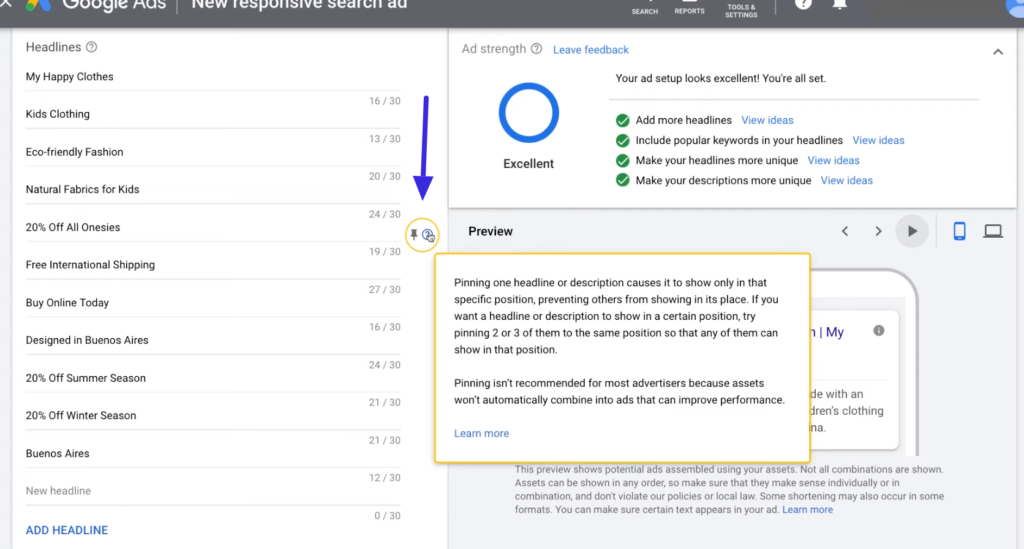
What to Avoid
- No more than 1-2 responsive search ads per ad group (different than the standard four expanded text ad variations per ad group).
- Don't pin more than 1-2 essential headlines, as this defeats the purpose of the algorithm.
- Don't write a single cohesive message; each headline and description should be unique so that it can be matched to any other asset variation.
- Don't get repetitive- try to create unique assets to test against each other.
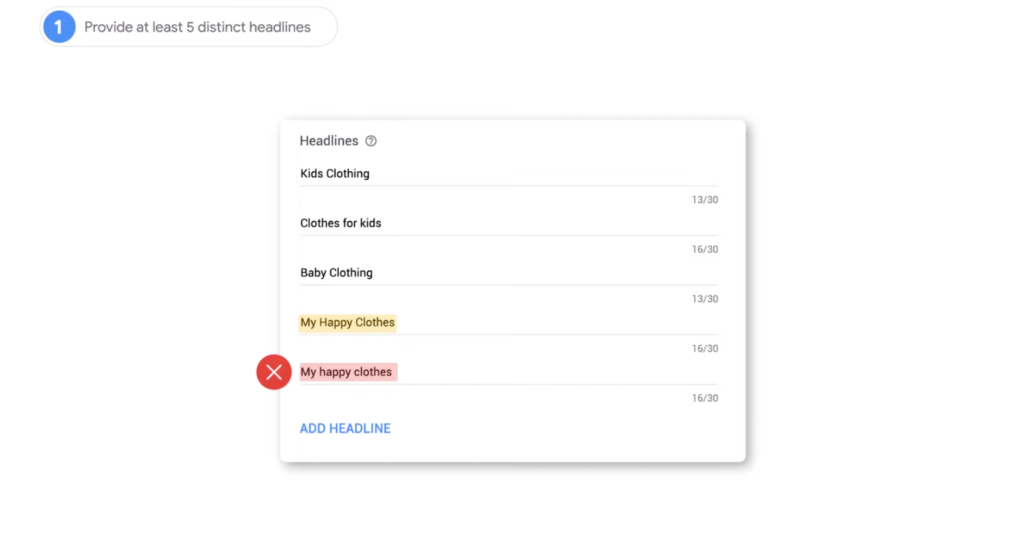
Testing
Finished your responsive search ad? Great! The next step is to test, test, test.
Try different variations of headlines and descriptions to see what works best for your audience.
Don't forget to monitor your results closely. Keep an eye on your click-through rate (CTR), conversion rate, and cost per lead.
If you're not happy with your results, make changes to your ad until you find a winning set of assets.
Asset Reports
Google now creates an asset report for responsive search ads.
This report focuses on responsive search ads, specifically with an impression count for each headline and description.
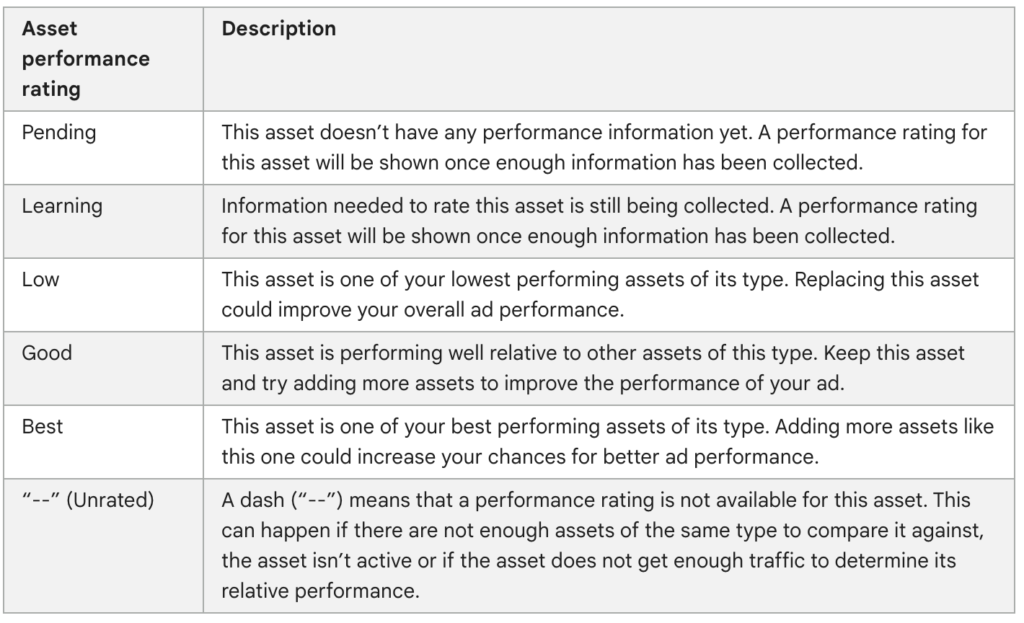
The Performance column helps compare individual assets of the same type so you can add or replace assets based on performance.
Final Thoughts
Responsive search ads are a great way to save time and improve your results. Just remember to keep your headlines and descriptions relevant, include a call-to-action, use persuasive language, and test, test, test!
While you have less control over your ad copy with responsive search ads, you will save time creating ad copy combinations with Google's algorithm.
If you're looking to improve your results with less effort, responsive search ads are a great option!



